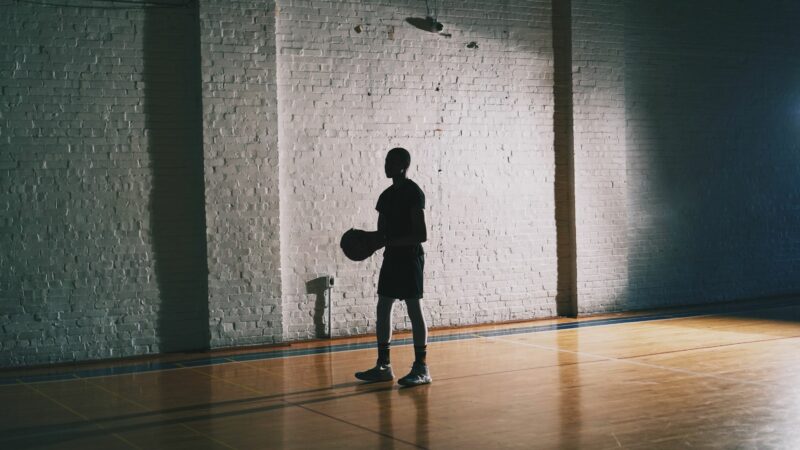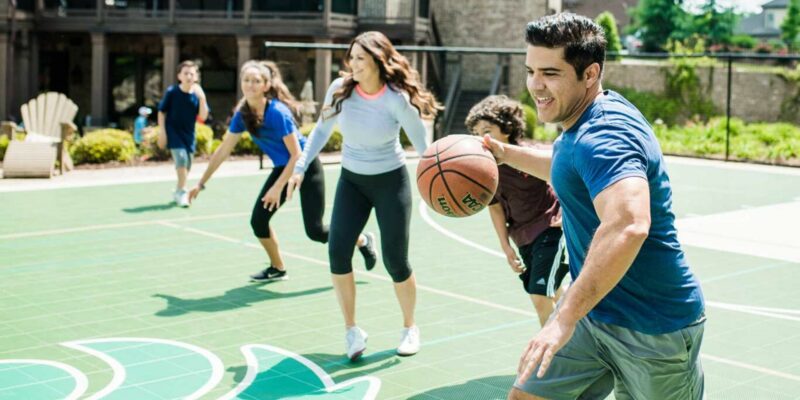I just turned thirty. Yet I remember my early athletic experiences in vivid detail. My brother and I grew up playing every sport we could think of. Basketball, football, baseball, tennis, golf, wiffle ball—you name it, we played it. Once we cut out the bottom of one of my mom’s baskets and nailed it to a telephone pole to use as a makeshift basketball hoop when ours was broken. My parents signed us up for every sport and league they could afford. I wound up playing college golf, and my brother played college baseball before being drafted by the San Diego Padres. I recently graduated with my doctorate in psychology and my brother is finishing his residency after attending medical school.
Although we did not wind-up earning careers because of our sports-filled youth, our experiences helped to foster positive development for each of us, and our parents played an integral role in this process. They did many things right when it came to sports, but here I’ll focus on two crucial points that my parents nailed.
1. My parents made playing sports more about having fun and less about winning.
We played because we loved to play. My fondest memories are those spent with family and friends gathering to play whatever just for the heck of it. Whether it was backyard wiffle ball or hallway soccer, I can always remember how much fun we had and can never quite recall who won. Research shows that fostering a “winning at all costs” attitude may lead to more aggressive or antisocial behavior.[1] Parents should foster the natural joy that arises from skill development rather than champion winning and exhibiting dominance over another as the number one priority.
Parents should also praise children for being a reliable teammate, striving for goals, losing and winning with equal grace, and being physically active. Rewarding these behaviors instead of focusing solely on winning leads to higher self-esteem[2],[3],[4] and greater psychological well-being.[4],[5]
Amanda Visek, an exercise science professor at George Washington University, found that children cite “fun” as the primary reason for participation in organized sport and its absence as the number one reason for youth sport attrition.[6] She recently surveyed nearly 150 children about what they found fun about sports. The kids identified 81 factors contributing to their happiness, and winning was only number 48 on the list. Instead, kids valued positive team dynamics, trying hard, positive coaching, and learning. We would do well to listen to our children on this front.
2. My parents encouraged us to play multiple sports and be involved in other activities as well.
I played several instruments growing up and sang in concert choir during college. My brother and I were both active in school clubs and church groups. We always were involved in more than one sport and played both team and individual sports.
Research suggests that this type of diversified involvement leads to the most positive outcomes.[7],[8],[9] Parents should encourage their children to scaffold athletic participation with various types of sports and other activities not only to become better athletes, but also to develop into healthier people.
The model for youth sports typically looks like this in the current environment: The best athletes receive individualized special attention and play on travel teams at age seven or younger. Coaches of elite teams (and parents too) pressure young athletes to specialize in one sport, even though studies show this leads to burnout, decreased enjoyment, depression, decreased self-esteem, and other negative outcomes for athletes.[10]
Instead, parents should encourage children to engage in a variety of activities—both structured and unstructured. Allow your kids to go outside and play by their own rules in an unstructured environment. Encourage them to continue playing in recreational as well as competitive leagues. Enlist them in multiple different types of sports and other activities, if they’re interested.
Balance is everything. Youth sports are not a reliable career path. Yet sports can provide our children with an environment to develop into healthy, successful adults. It’s up to us to prioritize the needs, desires, and overall well-being of our youth.
Endnotes
[1] Boardley, I. D., & Kavussanu, M. (2010). Effects of goal orientation and perceived value of toughness on antisocial behavior in soccer: The mediating role of moral disengagement. Journal of Sport and Exercise Psychology, 32, 176–192.
[2] Barber, B. L., Eccles, J. S., & Stone, M. R. (2001). Whatever happened to the jock, the brain, and the princess? Young adult pathways linked to adolescent activity involvement and social identity. Journal of Adolescent Research, 16, 429–455. doi:10.1177/0743558401165002
[3] Fredricks, J. A., & Eccles, J. S. (2008). Participation in extracurricular activities in the middle school years: Are there developmental benefits for African American and European American youth? Journal of Youth and Adolescence, 37, 1029–1043.
[4] McHale, J. P., Vinden, P. G., Bush, L., Richer, D., Shaw, D., & Smith, B. (2005). Patterns of personal and social adjustment among sport-involved and noninvolved urban middle-school children. Sociology of Sport Journal, 22, 119–136.
[5] Smith, A. L., Ntoumanis, N., & Duda, J. L. (2007). Goal striving, goal attainment, and well-being: Adapting and testing the Self-Concordance Model in sport. Journal of Sport & Exercise Psychology, 29, 763–782.
[6] Visek, A. J., Achrati, S. M., Manning, H., McDonnell, K., Harris, B. S., & DiPietro, L. (2015). The fun integration theory: Towards sustaining children and adolescents sport participation. Journal of Physical Activity & Health, 12(3), 424–433. doi:10.1123/jpah.2013-0180
[7] Denault, A. S., & Poulin, F. (2009). Intensity and breadth of participation in organized activities during the adolescent years: Multiple associations with youth outcomes. Journal of Youth and Adolescence, 38, 1199–1213.
[8] Linver, M. R., Roth, J. L., & Brooks-Gunn, J. (2009). Patterns of adolescents’ participation in organized activities: Are sports best when combined with other activities? Developmental Psychology, 45, 354–367. doi:10.1037/a0014133
[9] Zarrett, N., Fay, K., Li, Y. B., Carrano, J., Phelps, E., & Lerner, R. M. (2009). More than child’s play: Variable- and pattern-centered approaches for examining effects of sports participation on youth development. Developmental Psychology, 45, 368–382.
[10] Wall, M., & Côté, J. (2004, September–October) The influence of early sport participation on future sport investment or dropout, paper presented at the meeting of the Association of the Advancement of Applied Sport Psychology, Minneapolis, MN.
Continue Exploring

Wellbeing
11 Warning Signs to Performance-Based Identity
Developmental scientist, Benjmain Houltberg outlines the warning signs that show whether an athlete suffers from performance-based identity.

Practices
Aspire to Inspire: Learning the Mamba Mentality for Every Day Greatness
Dr. Stephanie Trudeau breaks down the Mamba Mentality framework and offers tips for how to integrate it into our own lives.

Blog
Conversing on Sports
Benjamin Houltberg reflects on working with elite athletes, performance-based identity, and the role of community in sports.

